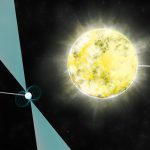Glossary of Radio Astronomy Terms
Dark matter:
A type of matter that does not interact with or emit visible light or other forms of electromagnetic radiation, as far as we know. Its existence is inferred by its obvious gravitational effects.
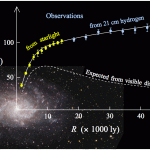
Debris Disk:
A ring-shaped circumstellar disk of dust and debris in orbit around a star. Seen in the earliest period of the formation of solar systems around stars such as our Sun.

Declination:
One of two coordinates used to locate the position of an object in Earth’s celestial sphere. Similar to the latitude and longitude of Earth’s surface, Declination runs between the north and south poles of the celestial equator. (See Right Ascension)
Diazenylium:
An ion with the chemical formula N2H+ that is commonly found in interstellar environments and stellar nebulas.
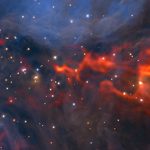
Diffraction Fringe:
Blurred fringe surrounding an image caused by the wave properties of light. No detail smaller than the fringe can be seen. (see fringe for more)
Diffuse ionized gas:
Also referred to as the “Reynolds Layer”, Diffused Ionized Gas is nearly fully ionized gas in the Milky Way.
Double-lobed Radio Source:
A galaxy that emits radio energy from two regions located on opposite sides of the galaxy.
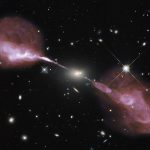
Doppler:
Doppler shift or Doppler effect: The change in wavelength due to the relative motion of source and receiver. Things moving toward you have their wavelengths shortened. Things moving away have their wavelengths lengthened.
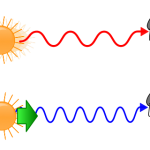
Dust:
Tiny grains of material that block and scatter visible light and shorter wavelengths. Longer wavelengths are able to pass through dust in space, which has allowed astronomers to image previously hidden objects, such as the center of the Milky Way Galaxy.

Dwarf Galaxy:
A galaxy that is significantly smaller in size compared to a normal galaxy. Dwarf galaxies are low in luminosity, and often irregular or elliptical in shape.
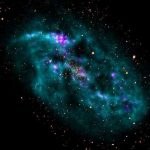
Dwarf star:
Making up most of the main-sequence stars, dwarf stars are low in luminosity and one of the most common type of stars found in the universe. Our sun is a yellow dwarf star.
